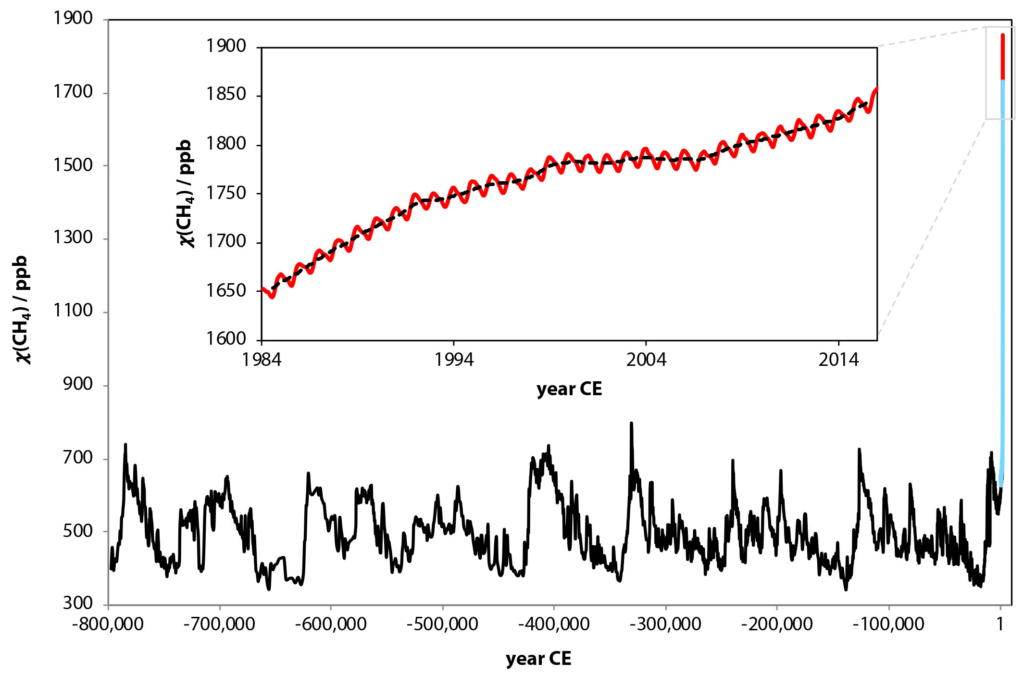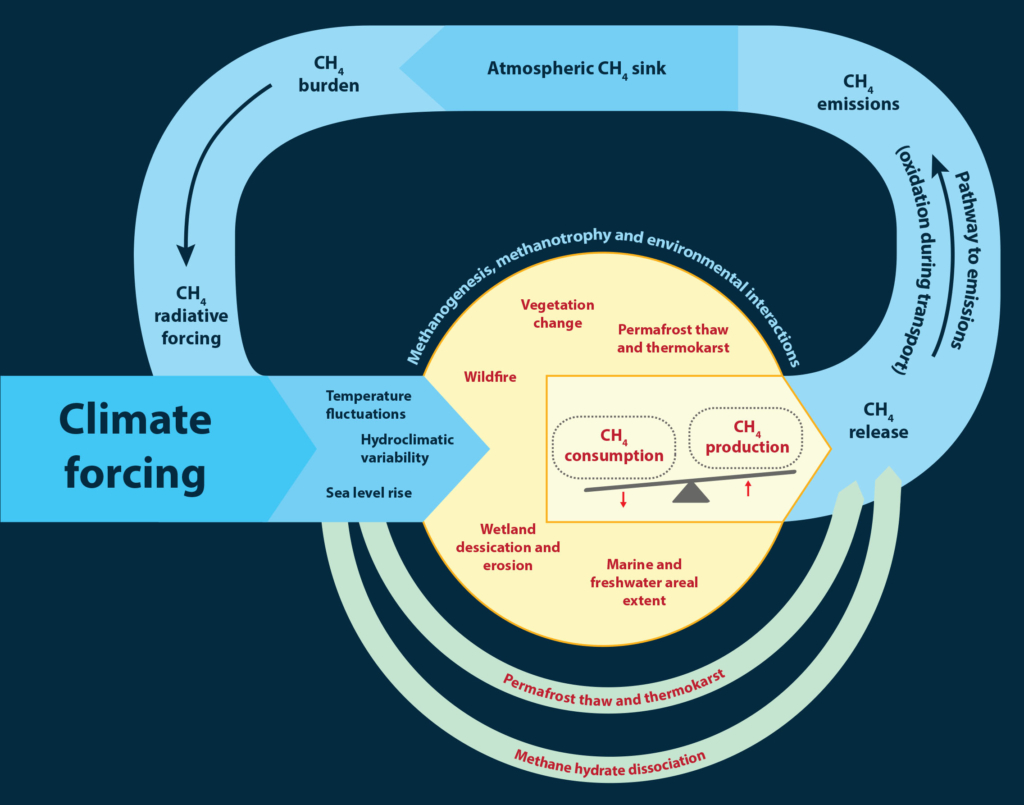NESSC-Research: Methane in a warmer world
Wetlands like peat bogs and marshlands, and freshwater systems like rivers and lakes, are set to become an even larger source of the powerful greenhouse gas methane in the near future. Because of rising global temperatures due to climate change, their emissions will significantly increase during this century, a new NESSC-paper concludes. Current methane emissions from permafrost environments are estimated to be small, though they are also expected to increase in the coming decades and could become more and more influential if the earth’s climate continues to warm during the next centuries. The review paper, which was written by a group of collaborating NESSC-scientists, bridges the gap between geosciences and microbial ecology. It was published in Reviews of Geophysics.
Methane, a more powerful greenhouse gas than carbon dioxide (CO2), is emitted into the atmosphere as result of human activities, like agriculture and the burning of fossil fuels – but is also produced in vast quantities by microbes in various natural environments, such as wetlands, lakes and permafrost environments. Increasing global temperatures can speed up the emissions of methane in these environments in the near future – which could lead to even further warming of the planet. This effect, called a positive climate feedback, could become a reality if anthropogenic emissions of greenhouse gasses are not sharply reduced in the coming decades, the scientists warn.
Wetlands and freshwater systems
Geoscientists and microbial scientists working jointly together in the Netherlands Earth System Science Centre (NESSC) have analysed the available scientific literature on the natural methane sources and their impacts in the immediate and distant future. The scientists conclude that methane emissions coming from wetlands, like bogs and marshes, are expected to increase in the coming decades with rising global temperatures, growing by up to sixty percent until the turn of the century.
Another major source of methane to the atmosphere are freshwater systems like rivers and lakes, where methane is produced due to the breakdown of organic materials, like leaves and plants. Climate warming, causing a reduction of ice cover during winters and warmer waters, would result in longer periods of methane production and higher emissions. The paper underlines that a better understanding of the dynamics of both wetlands and freshwater systems, particularly the role of microorganisms, is urgently needed.

Permafrost
Permanently frozen soils in the Arctic regions, so-called permafrost regions, form a large potential source of methane emissions in the near future. While there is currently no clear evidence that methane emissions from these regions are increasing, the researchers expect emissions to rise as the region warms further. Temperatures in Arctic regions have been warming faster than anywhere else on the globe.
Warming temperatures will thaw permafrost soils, causing permafrost tundra to increasingly contribute to atmospheric methane in the coming ten to fifty years, although their contribution compared to the global scale would be relatively small until the end of the century. After 2100, emissions from permafrost regions will likely grow further if current warming continues unchecked.
Methane consumption
The vast quantities of methane trapped in hydrates in oceans and sea floors are not expected to contribute significantly to global methane emissions in the near or long-term future. While climate warming may eventually lead to destabilisation of methane hydrates in the long term the vast oceanic methane sink is expected to minimize these emissions to the atmosphere.
The paper highlights the important role that microbes play in the methane cycle, both in the production but also the consumption of methane gas in different natural environments. Not all methane gas produced in soils reaches the atmosphere due to methane-consuming bacteria. It is poorly understood if, or how, this microbial balance can change under warming climate conditions, the paper notes. The scientists therefore stress the importance of quantifying if methane consumption can counterbalance increasing methane production under future climate scenarios.

NESSC
The new review paper is the result of a group of collaborating NESSC-researchers who have different scientific backgrounds, thereby underlining the strengths of NESSC’s interdisciplinary approach. The Netherlands Earth System Science Centre is a virtual climate change research centre that brings together a diverse group of scientists with backgrounds in physics, earth sciences, ecology and mathematics. NESSC-researchers investigate diverse aspects of the climate system, such as methane emissions, the Earth’s climate sensitivity to CO2, and climate tipping points.
Article
Methane feedbacks to the global climate system in a warmer world
Joshua Dean, Jack Middelburg, Rien Aerts, Luke Blauw, Matthias Egger, Mike Jetten, Anniek de Jong, Ove Meisel, Olivia Rasigraf, Caroline Slomp, Michiel in ‘t Zandt and Han Dolman
Reviews of Geophysics
doi: 10.1002/2017RG000559

